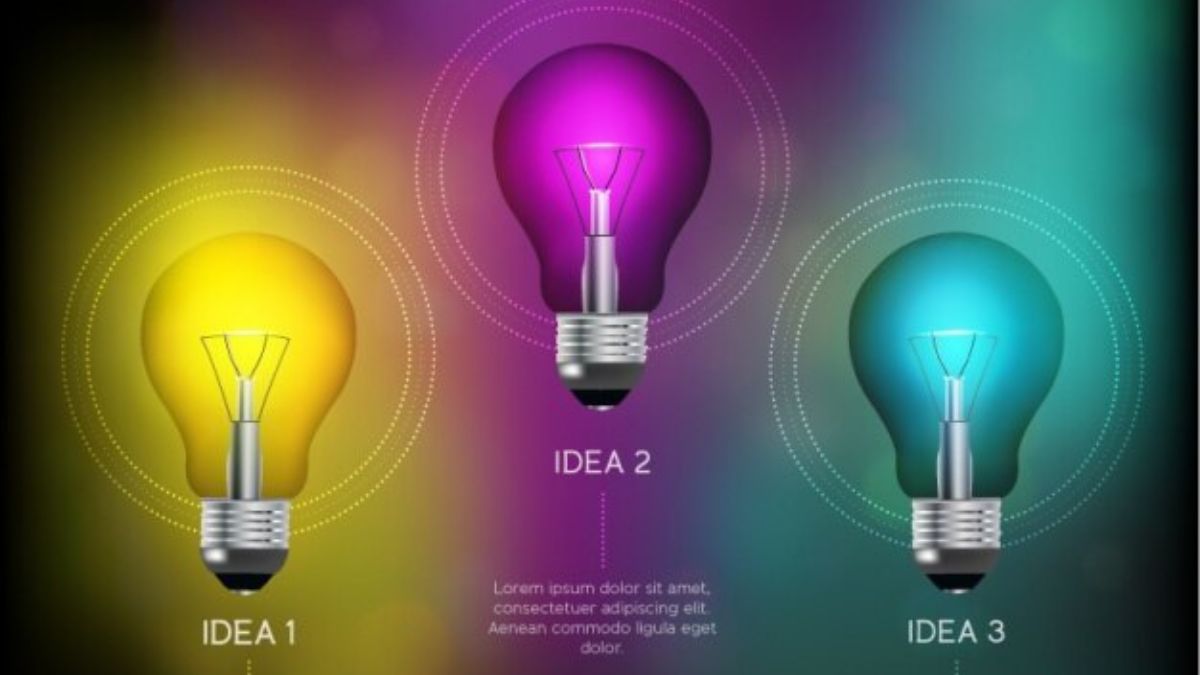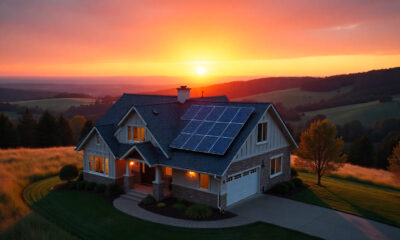TECH
Three Way Light Bulbs: The Ultimate Guide

Lighting plays a crucial role in our daily lives, and the type of light bulb we choose can significantly impact both our comfort and energy bills. If you’ve ever wondered about three-way light bulbs, you’re in the right place. These versatile bulbs offer multiple brightness levels, making them a favorite for many homeowners. In this guide, we’ll dive deep into everything you need to know about three-way light bulbs.
What is a Three-Way Light Bulb?
3-way light bulb are designed to provide three levels of light intensity from a single bulb. Unlike regular bulbs that offer just one level of brightness, three-way bulbs allow you to adjust the lighting to suit different needs and moods. This flexibility makes them ideal for various settings, from reading nooks to living room ambiance.
How Do Three-Way Light Bulb Work?
The magic of 3-way light bulb lies in their inner mechanics. Inside a three-way bulb, you’ll find two filaments instead of one. These filaments can operate independently or together, providing three distinct levels of brightness. For instance, a typical three-way bulb might offer 50 watts, 100 watts, and 150 watts of light. Switching between these settings is usually achieved with a special three-way socket and switch.
Types of Three-Way Light Bulb
3-way light bulb come in various types, each with its own benefits:
- Incandescent: The traditional choice, known for their warm light but less energy-efficient.
- LED: More energy-efficient and longer-lasting, LEDs are becoming increasingly popular.
- CFL (Compact Fluorescent Lamp): These bulbs are also energy-efficient and offer a middle ground between incandescent and LED bulbs.
Advantages of Using Three-Way Light Bulb
- Energy Efficiency: By adjusting the brightness, you can reduce energy consumption when full brightness isn’t needed.
- Versatility: Ideal for different tasks and moods, from bright reading light to soft ambient lighting.
- Cost-Effectiveness: Although they may cost more upfront, their versatility can lead to long-term savings.
Common Applications of Three-Way Light Bulbs
- Living Rooms: Perfect for creating different atmospheres, from bright for entertaining to dim for relaxing.
- Bedrooms: Ideal for providing a bright light for reading and a soft light for winding down.
- Offices: Useful for adjusting lighting based on task requirements.
Choosing the Right Three-Way Light Bulb
When selecting a 3-way light bulb, consider the following factors:
- Wattage: Ensure your lamp can handle the maximum wattage of the bulb.
- Lumens and Brightness: Look at the lumens rating to understand the bulb’s brightness.
- Color Temperature: Choose a color temperature that suits the room’s purpose, such as warm for living areas and cool for workspaces.
Installing a Three-Way Light Bulb
Installing 3-way light bulb is straightforward, but here are some tips to ensure it’s done correctly:
- Turn Off the Power: Always start by turning off the power to the lamp.
- Remove the Old Bulb: Carefully unscrew the existing bulb.
- Check the Socket: Ensure the socket is a three-way compatible socket.
- Install the New Bulb: Screw in the new three-way bulb.
- Test the Settings: Turn on the lamp and cycle through the settings to ensure all brightness levels work.
Troubleshooting Common Issues
If your 3-way light bulb isn’t working correctly, here are some common issues and solutions:
- Flickering Problems: This could be due to a loose connection or an incompatible switch.
- Inconsistent Brightness: Check if the bulb is properly screwed in and that the socket is clean.
- Bulb Not Working: Ensure the socket is a three-way socket and not a standard one.
Energy Efficiency and Environmental Impact
3-way light bulb are generally more energy-efficient than regular bulb. By using lower settings when full brightness isn’t needed, you can save on electricity and reduce your environmental footprint. Over time, the energy savings can offset the initial cost of the bulbs.
Three-Way Light Bulb vs. Dimmable Bulb
While both three-way and dimmable bulbs offer adjustable brightness, they operate differently. 3-way bulbs use separate filaments to achieve different brightness levels, while dimmable bulbs adjust the current flow to a single filament. Each has its pros and cons:
- Three-Way Bulbs: Simple to use and don’t require a dimmer switch.
- Dimmable Bulbs: Offer smoother transitions between brightness levels but need a compatible dimmer switch.
Maintenance and Longevity
To extend the life of your three-way light bulbs, follow these tips:
- Proper Handling: Avoid touching the bulb with bare hands, as oils can affect performance.
- Regular Cleaning: Dust the bulb and socket to ensure good contact.
- Avoid Overuse: Don’t leave the bulb on the highest setting for extended periods.
Innovations in Three-Way Light Bulb Technology
The lighting industry is continuously evolving, and three-way bulbs are no exception. Modern innovations include smart three-way bulbs that can be controlled via apps or voice assistants, offering even greater convenience and energy management.
Cost Analysis
While3-way bulbs may have a higher upfront cost compared to standard bulbs, their versatility and energy-saving potential can lead to significant long-term savings. Additionally, with various options available, there are budget-friendly choices that don’t compromise on quality.
Conclusion
3-way light bulbs are a fantastic choice for anyone looking to enhance their lighting options at home or work. Their ability to offer multiple brightness levels makes them both versatile and efficient. Whether you’re reading, working, or relaxing, there’s a three-way light setting perfect for your needs.
Read More:Exploring Chinese Engadget: A Comprehensive Guide
FAQs
What is the lifespan of a three-way light bulb?
The lifespan varies by type, with incandescent lasting around 1,200 hours, CFLs around 8,000 hours, and LEDs up to 25,000 hours.
Can I use a three-way bulb in a regular socket?
Yes, but it will only work at one brightness level, typically the middle setting.
Are three-way light bulb energy efficient?
Yes, especially LED and CFL types, which offer significant energy savings compared to traditional incandescent bulbs.
How do I dispose of three-way light bulb?
Incandescent bulbs can be disposed of in regular trash, while CFLs and LEDs should be taken to recycling centers due to their electronic components.
Are there smart three-way light bulb available?
Yes, many modern smart bulbs offer three-way functionality along with app and voice control capabilities.

-

 BUSINESS3 months ago
BUSINESS3 months agoGrow Your Audience with USA Instagram Followers
-

 TECH3 months ago
TECH3 months agoFreedom Forever Solar Reviews Explain How Conversational Intelligence Turns Customer Interactions into Insights
-

 HEALTH3 months ago
HEALTH3 months agoExploring the Best Cannabis Product Options for Every Lifestyle
-

 BUSINESS3 months ago
BUSINESS3 months agoOn the Frontlines of Conservation: The Role of Tracker Academy Graduates in Anti-Poaching